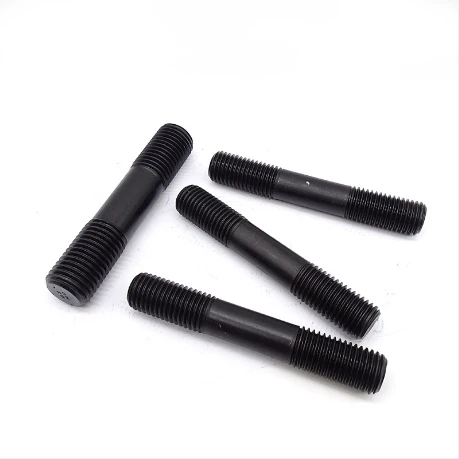

Understanding the Characteristics and Applications of M36 Bolts in Construction
Dec . 30, 2024 00:55 Back to list
Understanding the Characteristics and Applications of M36 Bolts in Construction
Understanding M36 Bolt Specifications, Applications, and Importance
Bolts are essential components in various engineering and construction projects, providing stability and strength to structures and machinery. Among the many types of bolts available, the M36 bolt stands out due to its specific measurements and applications. In this article, we will delve into the characteristics, uses, and significance of the M36 bolt.
What is an M36 Bolt?
The M in M36 refers to the metric system, used widely in engineering and manufacturing. The number 36 indicates the nominal diameter of the bolt, which is 36 millimeters. M36 bolts are typically made of high-strength materials such as carbon steel or stainless steel, designed to withstand significant loads and resist wear and corrosion.
These bolts are available in various grades, which signify their tensile strength, ductility, and other mechanical properties. For instance, an M36 bolt may come in grades such as 8.8, 10.9, and 12.9, each of which has different yield strengths and applications. The higher the grade, the stronger the bolt, making it suitable for more demanding environments.
Specifications of M36 Bolts
The specifications of an M36 bolt are crucial for ensuring that it meets the requirements of the specific application. Here are some key specifications to consider
1. Diameter The M36 bolt has a nominal diameter of 36 mm. 2. Thread Pitch M36 bolts typically come with a standard thread pitch of 4 mm, but fine pitches may also be available for specialized applications. 3. Length M36 bolts are available in various lengths, typically ranging from 100 mm to 400 mm or more, depending on the requirements of the project. 4. Head Types They come in different head styles, including hexagonal, square, or round, which can affect the installation method and tool requirements. 5. Coatings Many M36 bolts are coated with zinc or other protective finishes to enhance corrosion resistance, especially in harsh environments.
m36 bolt

Applications of M36 Bolts
M36 bolts serve a wide array of applications across multiple industries. Some common applications include
1. Construction M36 bolts are often used in the construction of buildings, bridges, and other infrastructures, providing the necessary strength and durability to support heavy loads. 2. Heavy Machinery These bolts are integral to assembling heavy machinery and equipment, where high tensile strength is crucial for performance and safety. 3. Automotive Industry M36 bolts are found in various automotive applications, supporting structural components that require strong and reliable fastening methods. 4. Mining and Oil Industries In industries where equipment faces extreme conditions, such as mining or oil drilling, M36 bolts are preferred for their toughness and resistance to wear.
Importance of Proper Installation
The installation process of M36 bolts is critical to their performance. Proper torque specifications must be adhered to ensure that the bolts are neither too loose (which can lead to joint failure) nor too tight (which can cause bolt breakage). Using the appropriate washers and nuts is also essential for achieving a secure connection.
Moreover, regular maintenance and inspections are key to ensuring the longevity of M36 bolts in any application. Checking for signs of wear, corrosion, or loosening can prevent unforeseen failures and maintain the safety of structures.
Conclusion
In summary, M36 bolts are indispensable components in various applications, known for their strength and reliability. Their specifications make them suitable for demanding environments, and understanding these characteristics allows engineers and builders to make informed decisions when selecting fasteners for their projects. Whether in construction, heavy machinery, automotive manufacture, or resource extraction, M36 bolts play a vital role in ensuring the integrity and safety of structures and machinery. Proper installation and maintenance practices further enhance their performance, making them a cornerstone of modern engineering solutions. As technology advances, the importance of such fasteners remains critical to achieving safe and reliable construction across all sectors.
Latest news
-
High-Strength Hot Dip Galvanized Bolts - Hebei Longze | Corrosion Resistance, Customization
NewsJul.30,2025
-
Hot Dip Galvanized Bolts-Hebei Longze|Corrosion Resistance&High Strength
NewsJul.30,2025
-
High-Strength Hot-Dip Galvanized Bolts-Hebei Longze|Corrosion Resistance&High Strength
NewsJul.30,2025
-
Hot Dip Galvanized Bolts-Hebei Longze|Corrosion Resistance&High Strength
NewsJul.30,2025
-
Hot Dip Galvanized Bolts - Hebei Longze | Corrosion Resistance, High Strength
NewsJul.30,2025
-
High-Strength Hot Dip Galvanized Bolts-Hebei Longze|Corrosion Resistance, Grade 8.8
NewsJul.30,2025

